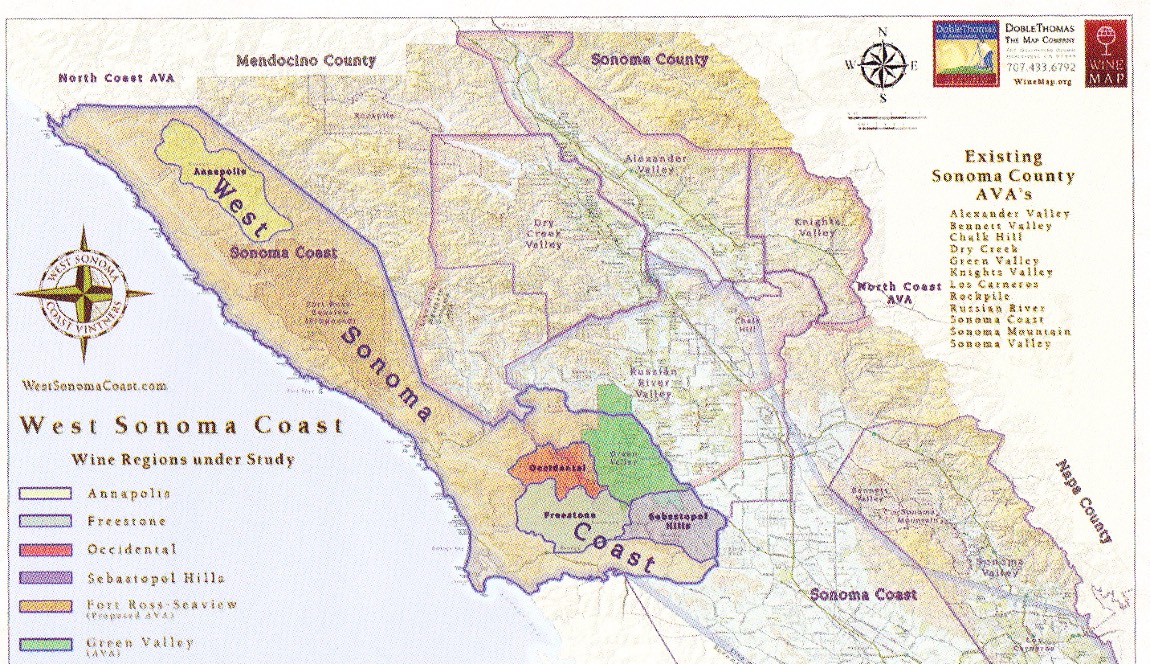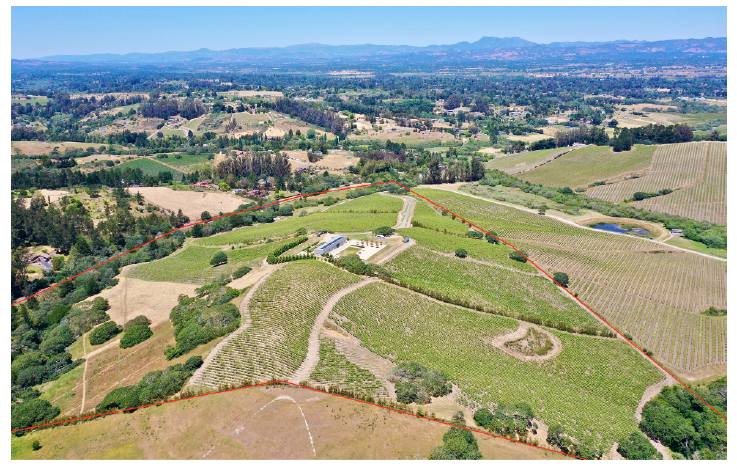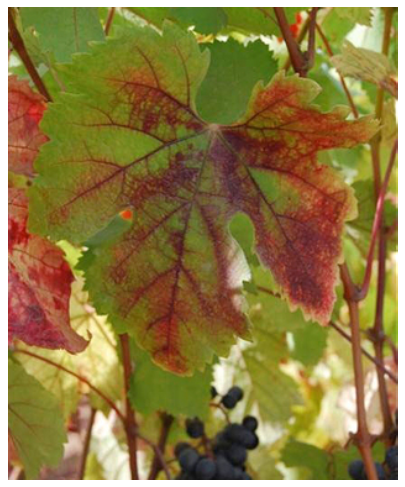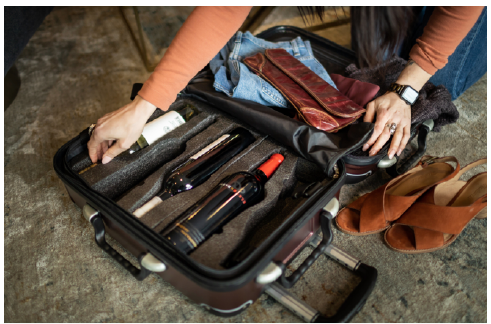Newsworthy Briefs
—Newsletter 12.30
New West Sonoma Coast AVA The TTB approved the newly established Wet Sonoma Coast AVA.
Located within the westernmost part of Sonoma County, the West Sonoma Coast AVA contains about 50
vineyards planted primarily to Pinot Noir and Chardonnay. The AVA has a unique marine-influenced terroir and
represents a very cold, marginal viticultural region. West Sonoma Coast is the 19th AVA in Sonoma County. It
contains three sub-regions from north to south: Annapolis, Fort Ross-Seaview AVA and Freestone-Occidental.
Elevation ranges from 400 to 1,800 feet with vineyards planted on relatively steep ridge tops near the Pacific
Ocean, both above and below the fog line. Temperatures are at least 10 or more degrees cooler than the rest
of the Sonoma Coast AVA. The wines tend to have juicy acidity, moderate alcohol, and pure fruit flavors. For
more information, visit www.westsonomacoast.com, the website for the West Sonoma Coast Vintners
association that promotes the individuality of the West Sonoma Coast AVA.

Mr. Pinot Passes Away Josh Jensen, affectionately called “Mr Pinot,” first planted grapevines at a
remote property on Mt. Harlan in the Gabilan Mountains in 1974 at a time when he was among a select few
attempting to farm Pinot Noir in California. Jensen’s remarkable story and subsequent success were first told in
detail in 1993 in the first edition of the book, The Heartbreak Grape, A Journey in Search of the Perfect Pinot
Noir, by Marq de Villiers. A completely revised and updated version was published in 2006. His saga is an
inspiration for anyone trying to follow their passion for Pinot Noir. Jensen’s efforts found vindication and his
Pinot Noirs from Calera Wine Co became hugely popular and among the top echelon in California. I have
written extensively about Jensen and the Calera wines in the PinotFile on at least six occasions dating back to
2007 and have reviewed more Calera Pinot Noirs than those from almost any other California producer.
Jensen retired at age 73, sold Calera Wine Co. to the Duckhorn Wine Co., and passed away at age 78 in
June 2022.
Sean Thackrey Lost to Cancer Thackrey, an eccentric, some say, an enigmatic winemaker who crafted
very distinctive wines at his home in Bolinas, CA, died in June 2022 at the age of 79 after a 10-year battle with
cancer. He liked to tell the story that he loved the view from the house he built but wanted to spruce up the
fence, so he planted grapevines along its base which eventually produced grapes that led him to make wine.
Although he is best known for a number of red varietals other than Pinot Noir named after constellations, he did
begin crafting “Andromeda Pinot Noir” with the 2002 vintage sourced from Devil’s Gulch Vineyard in Marin
County. Thackrey aimed for a Pinot Noir “that is uniquely expressive and one that is wilder and more
mysterious and not meant to be light and simple.” My reviews of these wines from 2002-2015 confirm this
character.
New Winemaker at Dutton-Goldfield Melissa Stackhouse, who apprenticed at Robert Mondavi
Winery, Sterling Vineyards, Joseph Phelps Winery, and Peter Michael Winery, and later was the winemaker at
La Crema, J Vineyards & Winery, Meiomi, and Simi, is now winemaker for Dutton-Goldfield Winery based
in Sebastopol. Dan Goldfield, now age 65, wants to step back a bit and wanted a winemaker to take over the
day-to-day responsibilities of overseeing the winery’s production facility (where they have custom crush
customers as well) and assume the winemaking. Dan is still very involved and plans to lead the direction of the
Dutton-Goldfield wines and participate in tastings for many years to come. Visit www.duttongoldfield.com.
Bad News in 2022 for Oregon Vineyards An unexpected frost hit Oregon vineyards April 11-15
with overnight temperatures decreasing into the mid-20s in some locations. The timing was disastrous for those
grape buds that were emerging from their winter dormancy. Vineyard management consultant Stirling Fox
thinks the Willamette Valley could lose 50% of its annual grape crop making it a worse vintage than 2020 that
suffered significant grape loss from wildfire-induced smoke taint. Pinot Noir and Chardonnay bud earlier than
other varieties making them particularly vulnerable to early frosts. Undoubtedly, the 2022 crop will be small but
the full extent of the damage will only be fully revealed at harvest.
Andrew Jeffords calls “Pinotism” a Cult Within the Wine World This post led to an
article in Edible Arts online by Dwight Farrow (www.foodandwineaesthetics.com) published on June 8, 2022.
Farrow notes, “Jeffords is describing the cult-like exultation exhibited by Pinot Noir’s most dedicated fans. No
other grape quite induces the pious reverence one finds among those who have become entranced by Pinot”s
considerable charm. Both Jeffords and Farrow consider themselves former members of the cult because “its
too damn expensive and most affordable Pinot Noir is either undrinkable or at best disappointing. But more
importantly, there are just too many good wines out there with interesting differences to warrant the exclusivity
of cult-like allegiance.” It is true that Burgundy wines have become outrageously expensive and domestic ultra-premium Pinot Noirs range from $70-$125, but once you experience a sublime Pinot Noir, it is very hard to
resign your cult membership. Better for your psyche to just open your wallet and say, “Pinot.”
Joseph Phelps Vineyards Becomes Part of LVMH Joseph Phelps Vineyards has grown from
1973 as a 600-acre cattle ranch to an internationally acclaimed winery today. LVMH is the trusted steward of
historic wineries like Dom Perignon, Chateau d’Yquem, and Chateau Cheval Blanc, among others, LVMH is
situated to stay loyal to the founding roots of Joseph Phelps and the winery’s experience for the consumer will
remain unchanged and the St. Helena winery is open as usual for tastings and visits.
On the Wine & Health Front (1) A study published this year in the journal Nutrients followed male
Greek patients with coronary heart disease (CHD) in a randomized, single-blind study. The results showed that
those who consumed wine in moderation had much lower rates of oxidative stress (a factor in heart damage)
compared to patients who abstained or drank spirits. Presumably, the cause of this reductive effect was
polyphenolic compounds in wine that have the ability to counter oxidative stress. (2) A study published in Brain
Sciences looked at the brain benefits of wine, coffee and tea. Data was collected from 350,000 participants
ages 38 to 73 in the United Kingdom cohort. Among all participants, moderate wine drinkers (red, white and
sparkling wines were grouped together) had a 19 percent lower risk of dementia than non-wine drinkers. Wine-drinking
men showed a 17 percent lower risk while wine-drinking women showed no statistically significant
difference compared to non-wine drinkers. Tea showed a similar effect to wine but coffee has no statistically
significant difference in risk. People who drank three to six cups of tea per day had a 31 percent lower risk of
dementia. Unlike coffee, both tea and wine contain high amounts of polyphenolic compounds. The authors of
the study concluded: “ The potential neuroprotective effect of wine might be caused by natural ingredients of
wine not present in non-wine beverages, such as the phenolic substance resveratrol found in the skin of red
grapes.” (3) Research was published this year in the journal Frontiers in Nutrition titled Association Between
Wine Consumption and Cognitive Decline in Older People: A Systematic Review and Meta-Analysis of
Longitudinal Studies.Members of the International Scientific Forum on Alcohol Research reviewed this
research. The results showed that, in almost every study, both wine consumption within the usual guidelines
(no more than 2 drinks/day for men or 1 drink/day for women), as well as consumption in excess of these
limits, were similarly associated with a lower risk of cognitive decline. For studies providing data on the amount
of alcohol consumed, the risk of cognitive decline was reduced by 41% for both wine consumers drinking within
the recommended guidelines as well as those reporting wine consumption in excess of the guidelines when
compared with abstainers. Forum members were critical of some aspects of this study including the lack of
inclusion of potential effects of confounders on cognition. There remain questions regarding the effects of
wine and other alcoholic beverages on cognition. But, when compared with non-drinking or drinking of other
beverages, extensive research supports health and mortality advantages when wine is consumed moderately, especially with meals. (4) A peer-reviewed article appeared in Lancet in July 2022 that suggested that
there are no health benefits to drinking alcohol, only health risks for young adults ages 15-38. For adults over
40, the health risks from alcohol consumption vary by age and region but consuming a small amount of alcohol
such as drinking between one and two 3-4 ounce glasses of red wine can provide some health benefits such
as reducing the risk of cardiovascular disease, stroke, and diabetes. (5) The TTB has issued guidance on
health-related marketing claims in a four-part newsletter.”TTB advertising regulations prohibit any health-related
statement that is untrue in any particular or tends to create a misleading impression as to the effects of
alcohol consumption on health.” (6) The results from a Global Burden of Diseases study from the University of
Washington in Seattle were announced this week. Researchers found that for people ages 15-39, there is no
health benefit to drinking alcohol, only health risks. For those older than 40, consuming a small amount of
alcohol daily (one or two 3.4 fluid ounces of 13% ABV red wine, a can or bottle of 3% ABV beer, or a shot of
spirits at 40% ABV) can provide health benefits, including reducing the risk of cardiovascular disease, stroke
and diabetes. (7) Monitoring blood alcohol Levels with your phone may soon be a reality. A team of biomedical
engineers has invented an easy-to-use wearable sensor device that measures alcohol in your system via a
smartphone app. It also measures blood sugar and lactate levels. The project is in the early stages but the
hope is that it will be brought to market soon.
Want to Join the Wine Business? Five Wells Estate & Vineyards in Sebastopol, California,
consists of 72 +/- acres with 35 +/- acres planted to Pinot Noir and Chardonnay located in the Russian River
Valley and Sonoma Coast AVAs. Offered at $10,500,000. Presented by Jeff Bounsall Real Estate at
www.jmbland.com.

Wines of the Santa Cruz Mountains Taste of Terroir Dinner Series Vintners of the
Santa Cruz Mountains are presenting Taste of Terroir dinners featuring award-winning wines and incredible
food by local chefs. These dinners are an opportunity to meet the winemakers, enjoy farm-to-table cuisine and
taste the variety of wines of the Santa Cruz Mountains. Each dinner features different wineries from around the
region. The schedule: Sunday, July 24 - Wine Amongst the Redwoods with Big Basin Vineyards; Wednesday,
August 17 - Wines of the Iconic Ridge Monte Bello with Ridge Vineyards; Sunday, August 21 - Wines of
Corralitos with Lester Estate Wines; Friday, September 9 - Wines Influenced by the Pacific and San Francisco
Bay with Thomas Fogarty Winery; and Friday, November 4 - Premier Cruz with House Family Vineyards. For
more information and tickets, visit www.winesofthesantacruzmountains.com.
Sta. Rita Hills Wine & Fire 2022 Limited tickets are now on sale for both individual events and a
Wine and Fire Weekend Package. The Barn Party Kick-Off Event at the reconstructed barn at The Hilt Winery
will be on August 18 ($125 pp). The La Paulee Dinner at Babcock Winery on Friday, August 19, will be
honoring Vintner of the Year Rick Longoria and feature a BBQ dinner. Guests are encouraged to bring their
special bottles to share ($150 pp). On Saturday, August 20, the Speed Tasting with a Winemaker Event will be
held at Margerum Winery ($75 pp). On the evening of August 20, the Grand Tasting will be held at La Purisma
Mission in Lompoc ($120 pp). Sunday, August 21, is Funday where guests are invited to visit their favorite
wineries for special events. A Wine and Fire Passport gives guests the opportunity to visit participating tasting
rooms and enjoy 2 for 2 benefits and is good from August 18 through August 21 ($40). Shuttle tickets ($25 per
event) are available with several pickups at Lompoc Hotels. for more information and tickets, visit the Sta. Rita
Hills Winegrower’s Alliance website at www.staritahills.com.
Inflation Taking Aim at the Wine Business Bevinars by Mark Oldman (a leading company for
virtual wine classes) reports that a survey of more than 500 wine enthusiasts found that ࡪ are feeling the pinch
of inflation and almost 1/2 said they had reduced their wine consumption at home or dining out, and others were
opting for cheaper bottles or boxed wine. My son, who is the COO of a well-known winery in Napa, told me that
shipping charges for wine have skyrocketed with shipping companies adding fuel surcharges. Jamie Kutch,
proprietor and winemaker at Kutch Wines in Sonoma, lamented in his recent wine offering, “It pains me to have
to increase prices to you, my loyal customers. That said, on my end, things like glass costs are up 65%!. Corks,
capsules, labels, barrels, warehousing, etc., are all up in price. One of my important vineyard sources, McDougall
Ranch, has relentlessly raised fruit costs each year.” Having not taken a price increase in many years, I hope
you understand.” (Jamie raised his 2020 McDougall Ranch Sonoma Coast Pinot Noir price modestly to $69).
Speaking of inflation, how about a four-pack of either Pinot Noir or two Pinot Noirs and two Chardonnays for
$800! The second release from Michael Brughelli’s 2019 wines came out recently. Brughelli had spent seven
years directing wine sales at Bien Nacido, departing in 2019. While there, he launched the Scar of the Sea
label which became very successful. In 2020, Brughelli sold his portion of the label to Mikey Giugni in 2020 to
launch his eponymous label. He is also the winemaker for Folded Hills based in Gaviota. The Brughelli wines,
which are a blend of multiple vineyards rather than a single site are vinified at nearby Au Bon Climat Winery.
Some wine critics have called the 2018 Brughelli Pinot Noir one of the very best in Santa Barbara County.
Consumers must join the Brughelli Society (free) to obtain the allocated wines. Visit
www.brughelliwine.com.
VinGardeValise This luggage is a sturdy solution for those who travel with wine.
It’s a line of tough suitcases that are gentle on glass, thanks to dense foam inserts created to cradle wine
bottles. The VinGardeValise Piccolo (pictured below) doubles as an anytime, anywhere carry-on piece of
luggage or as a checked wine travel case to travel safely with up to 5 bottles of wine and your clothes and
belongings on the other side. Available through Amazon or www.flywithwine.com. FlyWithWine also offers a
unique wineglass carrying case that makes it easy to travel with two wine glasses to restaurants, wine tasting,
and other venues there the wine glasses being offered don’t measure up to fine wine enjoyment. The wine
glass case inserts will accommodate most major branded “Universal mouth blown and machine blown glasses
such as Zalto, Spiegelau, and Scott Zwiesel.
Red Blotch Update (For Serious Wine Geeks Only) If you are a regular reader of the
PinotFile, you know that I have published considerable information about the Red Blotch infestation of Pinot Noir.
Here is the latest information. UC Davis researchers presented updates and recommendations on red blotch
issues and management during a “Grapevine Red Blotch Disease Symposium” on March 16, 2022. The
symposium included the results of research funded since 2019 under an ongoing multi-year grant through the
U.S. Department of Agriculture (USDA) Speciality Crop Research Initiative (SCRIZ0 called, “Ecobiology,
Impact, and Management of Grapevine Red Blotch Virus and its Vector(s) in California and Oregon Vineyards.”

Red blotch disease is caused by the grapevine red blotch virus (GRBV), and its potential vectors, have been
studied in California since 2013. GRBV impacts grape and wine quality by impacts including inhibited or
delayed grape ripeness, lower Brix levels, lower anthocyanin levels in grape berries, reduced berry weight, and
lower alcohol, color, and overall quality in resulting wines.
Professor Dr Anita Oberholster, the grant project director, cautioned, “Red blotch disease impacts can vary
greatly by site and season within a variety,” and emphasized that differences in growing season conditions can
result in highly variable red blotch impacts. A trial found that when more than 15% red blotch positive fruit is
fermented with red blotch negative fruit it will have negative quality impacts on the final wine. Oberholster
summarized,” At this point, longer hang-time seems to be the best thing we can do to decrease the difference
between red blotch positive and red blotch negative wines.”
A number of species of treehopper and leafhopper insects have been evaluated by entomologists as possible
GRBV vectors in trials since 2013. GRBV disease is still not well understood and the vector/pathogen
relationship is difficult to study. In 2016, UCD researchers did identify Spissistilus festinus, the three-cornered
alfalfa hopper (TCAH) is able to transmit GRBV from infected grapevines to uninfected grapevines in
laboratory and greenhouse trials. However, knowledge about its transmission efficiency and field transmission
is still unclear. Researchers have been monitoring and mapping vineyards in California and Oregon where red
blotch is present with patterns of GRBV infection that are consistent with being spread by a vector. TCAH did
not always explain the incidence of red blotch in some of those vineyards, and it was not present in all
locations.
Scaphytopius graneticus, a leafhopper, can acquire GRBV and it feeds on grapevines as a preferred host, but
not much is known about this insect. It has been found in vineyards in the Central Valley, Central Coast, Sierra
Foothills, and Napa and Sonoma Counties. Entomologist Dr Kent Daane said, “We can’t say for sure that
‘Scaphy’ is a vector, but we are leaning toward it.”
Daane also pointed out that roguing infected vines in vineyards and replanting with clean vines is effective in
reducing red blotch spread, but one cannot use insecticides to pray the way out of this problem.
UC Davis researcher, Justin Tanner, reported on crop level mitigation to control GRBV. In a study on a
Cabernet Sauvignon vineyard, he found, “applying more water or modifying the crop level by cluster thinning
did not bring the total soluble solids, sugar levels or anthocyanin levels up to uninfected levels.






